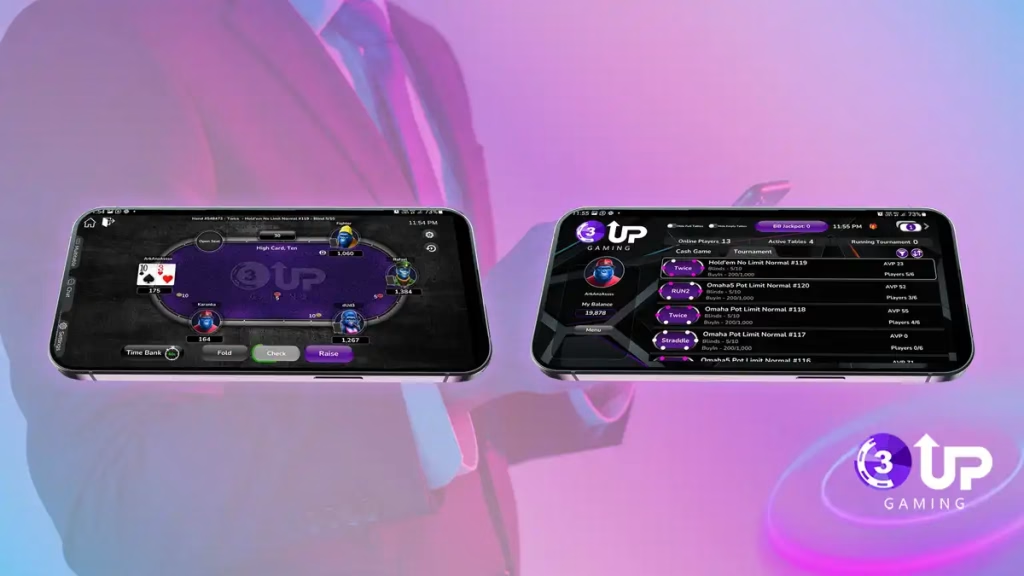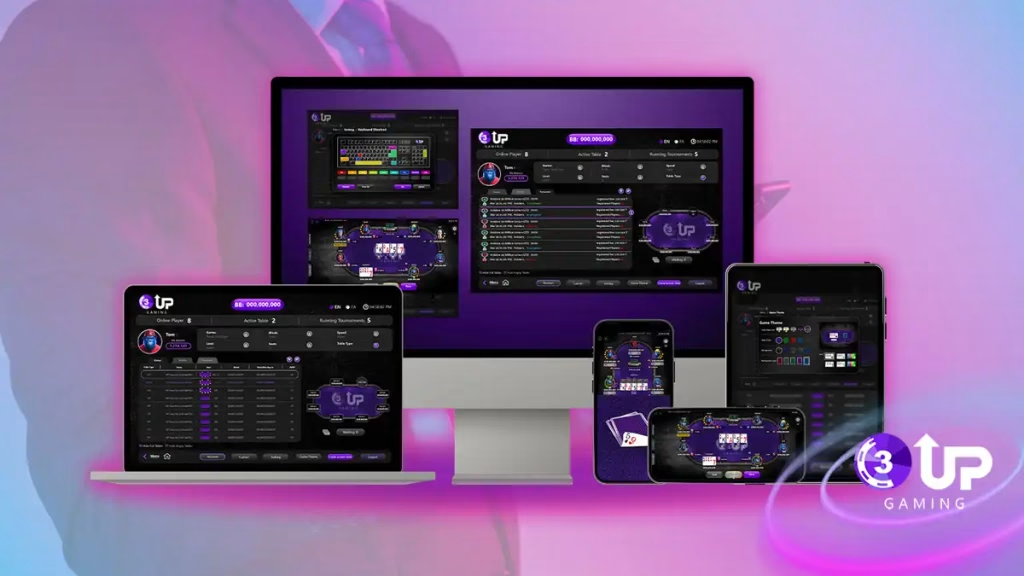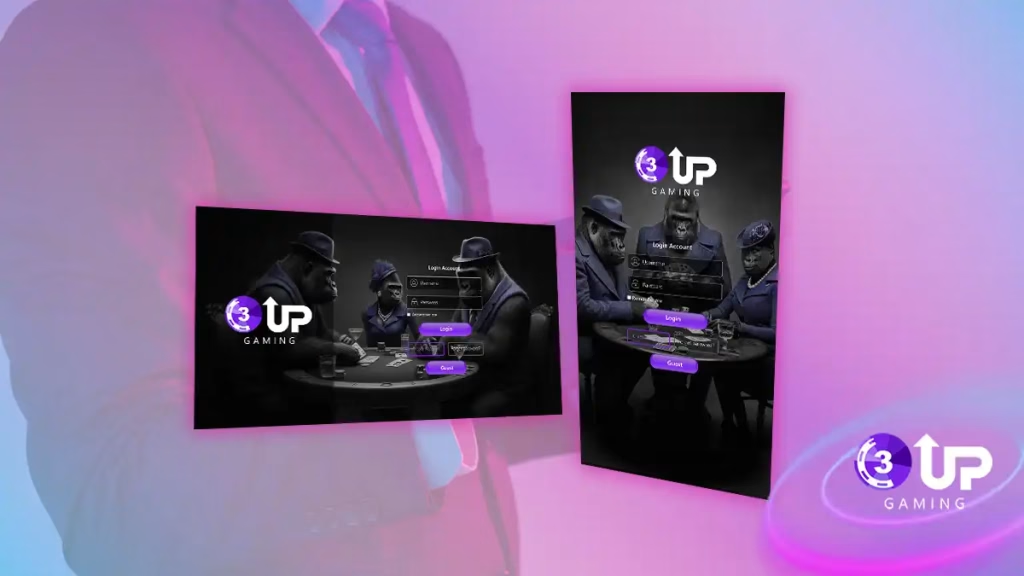Buy User-Friendly Poker Software! Are you struggling to keep players engaged on your poker platform? Do they complain about complicated interfaces or slow load times? If so, it might be time to Buy User-Friendly Poker Software. A seamless, intuitive user experience is not just a nice to have in today’s competitive poker market; it’s necessary. With more players accessing platforms from various devices and expecting frictionless interaction, ensuring your software meets these demands is key to long-term success.
As poker transitions from traditional brick-and-mortar settings to online environments, Whether launching a new platform or revamping an existing one, investing in user-friendly software isn’t just about aesthetics; it’s about empowering users with a platform that feels intuitive, responsive, and trustworthy.
Buy User-Friendly Poker Software
If you’re planning to launch an online poker platform, the smartest move you can make is to buy user-friendly poker software. In today’s highly competitive market, a smooth and intuitive user experience is what separates top-performing poker rooms from those that struggle to retain players. From seamless gameplay to easy navigation, a user-friendly interface ensures your players stay engaged and satisfied across all devices, desktop, tablet, or mobile.
When evaluating poker software, prioritize platforms that offer customizable UI, multi-language support, cross-device compatibility, and easy account management. These features not only enhance player satisfaction but also reduce customer support issues and improve retention. Look for solutions that include player-centric features like quick-seat functionality, real-time hand history, and secure payment integration. Investing in software with these capabilities increases your chances of long-term success.
Choosing the right provider to buy user-friendly poker software from is crucial. Opt for experienced developers with proven case studies, compliance with gaming regulations, and ongoing technical support. Brands like 3up Gaming, GG Poker, and others have set the standard by blending clean design with reliable performance. With the right software foundation, your poker business will be ready to scale quickly and deliver a competitive edge in a crowded market.
Why User Experience Matters in Poker Platforms

User experience (UX) directly affects player retention, session duration, and, ultimately, revenue. A poorly designed interface can frustrate users, driving them away to more intuitive competitors.
Conversely, an intuitive layout, fast performance, and smooth navigation lead to better engagement, more games played, and greater loyalty. If you’re considering buying poker software, prioritizing UX should be at the top of your checklist.
In online poker, milliseconds count. Players make rapid decisions, multitask across tables, and expect seamless transitions between games and account functionalities.
A superior UX doesn’t just retain players, it inspires confidence. Confidence in gameplay, in account security, and in the fairness of the system. It transforms one-time visitors into lifelong players.
Key Features of a User-Friendly Poker Interface
A truly user-friendly poker interface goes beyond aesthetics. Here are the essential features you should look for:
Clean Layout:
A clean interface with minimal distractions helps players focus on gameplay. Clear sections and well-organized elements promote efficiency and comfort.
Fast Load Times:
Pages and games should load quickly to retain user interest. Lag or delay can cause frustration and result in lost players.
Easy Navigation:
Users should find features and games intuitively. Logical menu structures reduce the time spent searching for tools or options.
In-Game Assistance:
Onboarding guides and tooltips help new users understand gameplay. Built-in support reduces reliance on external help.
Multi-table Support:
Experienced players often manage several games at once. A smooth multi-table interface boosts engagement and potential earnings.
Hand History Access:
Players can review past hands for strategy insights. Transparency in hand history also builds trust and credibility.
Visual and Audio Feedback:
Subtle sounds and animations confirm player actions. These cues enhance immersion and make the game more interactive.
Player Stats Display:
Real-time stats help players analyze performance. Displaying key data supports strategy and adds depth to gameplay.
These features offer a professional-grade interface that feels natural for both seasoned pros and newcomers.
Responsive Design: Desktop, Mobile, and Tablets

Modern players expect to access poker games from multiple devices. Responsive design ensures your platform adapts to desktops, tablets, and smartphones without sacrificing functionality or aesthetics. Software offering consistent user experience across devices can increase accessibility and attract a broader player base.
Before buying User-Friendly Poker Software, evaluate how well the platform scales on various screen sizes.
Mobile-first design is increasingly becoming the norm. According to recent analytics, more than 60% of online poker traffic originates from smartphones.
Ensuring your interface operates smoothly with touch input, various screen resolutions, and dynamic orientation changes can make the difference between a good and great product.
Customization Options for a Smooth UX
Why settle for one-size-fits-all software when your players expect more? Great poker platforms adapt to user preferences, allowing branded themes, localized languages, and flexible layouts. Curious how customization can boost loyalty and engagement?
Read on to discover the features that transform generic interfaces into personalized poker experiences.
Skinnable Themes:
Skins allow operators to change the platform’s visual style to match their brand identity. This visual consistency helps strengthen brand recognition and user trust.
Player Preferences:
Users enjoy tailoring their experience with adjustable sound, animation, and table display settings. Personalized environments increase comfort and engagement.
Multi-language UI:
Offering multiple languages makes the platform accessible to global audiences. It also shows cultural sensitivity and enhances player satisfaction.
Flexible Lobby Layouts:
Lobbies can be customized to highlight featured games or tournaments. This flexibility ensures players quickly find what interests them most.
Adaptive Animations:
Subtle animations that adjust to system performance improve visual appeal without slowing gameplay. They enhance user immersion while preserving speed.
These elements enhance comfort and foster a personalized experience, which is essential in building player loyalty.
Security and Fair Play in User-Friendly Systems
Security must never be compromised in the pursuit of user-friendliness. Look for poker software that includes:
SSL Encryption:
Secure Socket Layer (SSL) encryption protects player data during online transactions. It ensures that sensitive information such as login credentials and financial data is encrypted and inaccessible to third parties. Using SSL, poker platforms build a foundation of trust with their users.
Anti-Cheating Measures:
Effective anti-cheating mechanisms detect collusion, bots, and other unfair practices in real time. These tools use algorithms and behavioural analytics to identify suspicious patterns. A transparent, fair environment encourages healthy competition and long-term user retention.
RNG Certification:
Random Number Generator (RNG) certification ensures fair and unbiased card dealing. It is typically validated by third-party organizations that conduct audits and simulations. Verified RNG systems uphold game integrity and reassure players that outcomes are purely chance-based.
Secure Account Access:
Multi-factor authentication (MFA) and advanced login protocols safeguard player accounts from unauthorized access. Features such as biometric login and device recognition add extra layers of protection. These measures are crucial in maintaining account security and user confidence.
Activity Logging:
Comprehensive activity logs record user actions such as logins, transactions, and gameplay history. These records are invaluable for resolving disputes and detecting fraud. They also provide analytics operators can use to improve platform performance and compliance.
Players are more likely to invest time and money in a platform they trust. User trust is foundational if you aim to lead the Sales poker software market.
Integration with Payment Gateways
A critical component of the user experience is the ease with which players can deposit and withdraw funds. Good poker software should support the following:
Multiple Payment Options:
Don’t limit your customers to just one or two payment choices. Offer a variety of options, such as credit cards, e-wallets, and crypto, to meet global preferences. This flexibility increases user satisfaction and makes deposits and withdrawals more convenient.
Fast Transactions:
No one likes to wait for their money. Ensure your platform processes payments in real time or within minutes. Speedy transactions build trust and encourage repeated engagement.
Read More: Advanced AI Poker Bot
Compliance:
Staying compliant with financial and gaming regulations isn’t just about legality—it’s about protecting your business and your users. Implement KYC processes and AML protocols to stay safe and credible. Regulatory compliance also opens doors to more markets.
Payment Processor Reliability:
Imagine a player trying to deposit during a tournament, and the gateway fails. Choose processors with proven uptime and consistent transaction success. A reliable processor keeps the user experience smooth and stress-free.
Localized Gateways:
Players feel more at home when paying with familiar, region-specific methods. Support for local bank transfers, wallets, and currencies improves conversion rates. Cater to local needs and watch your retention grow.
This level of functionality reflects your commitment to providing a seamless, reliable experience.
Multilingual Support and Localization

Poker is a global game. If your software only supports English, you could lose a significant portion of the market. Multilingual support and cultural localization include:
Language Options:
Offering a range of language options allows players worldwide to feel comfortable and engaged. Whether it’s Spanish, Mandarin, or German, players appreciate platforms that speak their language. This improves usability and boosts your international reach and user retention.
Localized Content:
Delivering content tailored to regional cultures and preferences makes your platform more relatable and relevant. From localized tournaments to culturally appropriate visuals and offers, players are more likely to return to a platform that feels designed just for them.
Right-to-Left Language Support:
Supporting RTL languages like Arabic and Hebrew is essential for reaching broader audiences. Proper alignment, typography, and navigation in RTL formats enhance accessibility and usability for native speakers. It’s a detail that reflects inclusivity and professionalism.
Local Legal Compliance:
Ensuring your software complies with regional gaming laws is critical to avoid fines and disruptions. This includes age restrictions, gambling licenses, tax obligations, and data privacy regulations.
Localized Customer Support:
Offering support in users’ native languages helps resolve issues faster and improves satisfaction. Personalized communication builds stronger relationships, whether via live chat, email, or help centres.
These tools make international expansion smoother and more effective.
Case Studies of Top Performing User-Friendly Software
Wondering what sets the best poker platforms apart? Real-world success stories clearly show how user-friendly software drives engagement, retention, and revenue. If you aim to build a winning experience, these examples will show you precisely what works—and why.
- PokerStars: Offers a seamless cross-device experience, extensive customization, and robust security.
- GG Poker: Known for its responsive design and player-centric features like Smart HUD.
- 888poker: Features intuitive interfaces and excellent multilingual support.
- Partypoker: Focuses on clean UI and fraud prevention technologies.
- WPT Global: Combines elegant interface design with deep localization tools.
- 3up Gaming: Delivers highly adaptive white-label solutions with lightning-fast performance and a simplified onboarding experience for new operators.
These companies demonstrate that investing in UX is a robust growth and brand loyalty driver. Whether you’re launching a new platform or optimizing an existing one, prioritizing user experience pays off.
Read More: How to Buy Real Money Poker Apps Safely!
Final Tips Before Buying
Choosing the right poker software isn’t just a technical decision it’s a strategic move that affects your brand, player satisfaction, and bottom line. Before investing, consider these practical and proven tips to guide you toward a smart, informed purchase. Ready to build a poker platform your players will love? Start by checking off the essentials below.
Try Demos:
Hands-on experience is invaluable when choosing software. Demo versions let you explore the interface, test performance, and spot usability issues before committing. Use this opportunity to get honest feedback from your team or sample players.
Seek Scalability:
Your poker business may start small, but your software shouldn’t hold you back as you grow. Scalable platforms accommodate increasing users, features, and game types, ensuring your system evolves with your success.
Check Vendor Reputation:
Research your vendor thoroughly by reading reviews, case studies, and testimonials. A strong track record means fewer surprises and greater reliability. Talk to existing clients, if possible, to get insider perspectives.
Ensure Technical Support:
Responsive, 24/7 support can be a lifesaver during high-traffic periods or unexpected downtimes. Check if the vendor offers dedicated account managers, multilingual help, and fast response times.
Look for Feature-Rich Options:
Seek software with tournament management, promotions tools, CRM integration, and affiliate support. Rich features mean fewer add-ons and better player retention out of the box.
Evaluate Mobile Performance:
With a growing number of players using smartphones and tablets, flawless mobile performance is necessary. Test the software’s responsiveness, touch interactions, and device loading speeds.
Study Competitor Offerings:
Examine what your top competitors use and what features resonate with their users. Learning from others’ successes and failures gives you a competitive edge and fresh ideas.
Ask for a Trial Period:
A trial lets you assess real-time performance, backend management, and user satisfaction over days or weeks. It’s the most risk-free way to validate your decision and fine-tune operations. Making the correct choice now can save countless headaches later.
conclusion: Buy User-Friendly Poker Software
Buying User-Friendly Poker Software is an investment in your players’ satisfaction and your platform’s profitability. From responsive design and customization to secure payments and global reach, each feature contributes to a superior user experience. Don’t settle for less your players won’t.
If you’re ready to explore solutions, compare offers from top Sales poker software providers. Look for transparency, flexibility, and user-first design. The better the experience you provide, the more likely players are to stick around and that’s how platforms succeed.
FAQ
1. What is the best user-friendly poker software?
The best user-friendly poker software combines a clean interface, intuitive navigation, and fast performance. Solutions like 3up Gaming, PokerStars, and GG Poker are widely recognized for their streamlined user experience, player-focused features, and customization flexibility. The “best” option often depends on your specific needs, such as scalability, design control, and regional compliance.
2. How do I know if a poker platform is secure?
A secure poker platform should include features like SSL encryption, fraud detection, two-factor authentication (2FA), and fair RNG certification. Reputable providers also comply with gaming licenses and regularly update their systems to patch vulnerabilities. Always ask for security documentation and user protection protocols before making a decision.
3. Can I customize the poker software interface?
Yes, most premium poker software solutions offer UI customization, allowing you to change colors, branding, layout, and player avatars. White-label providers like 3up Gaming typically include full branding control, so you can deliver a unique and recognizable player experience aligned with your brand.
4. Does it work well on mobile devices?
Absolutely. Top-tier user-friendly poker platforms are fully responsive and optimized for mobile use, offering native or web-based apps for iOS and Android. Whether your players use smartphones or tablets, they’ll enjoy seamless gameplay, fast loading times, and full feature access on the go.
5. What payment methods should be supported?
A well-rounded poker software should support multiple payment gateways, including credit/debit cards, e-wallets (like PayPal or Skrill), cryptocurrency, and bank transfers. Flexibility in payments ensures a smoother user experience and helps you reach a wider global audience.
6. Is multilingual support necessary?
Yes, especially if you’re targeting an international user base. Multilingual support enhances accessibility and makes players feel more comfortable, increasing retention and conversion rates. Look for software that offers easy integration of multiple languages and region-specific content.
7. Can I test the software before purchase?
Most reputable poker software providers offer live demos or trial versions. Testing the software before purchasing lets you evaluate its performance, UI/UX quality, and feature set. It’s a critical step to ensure the platform aligns with your business goals and user expectations.


